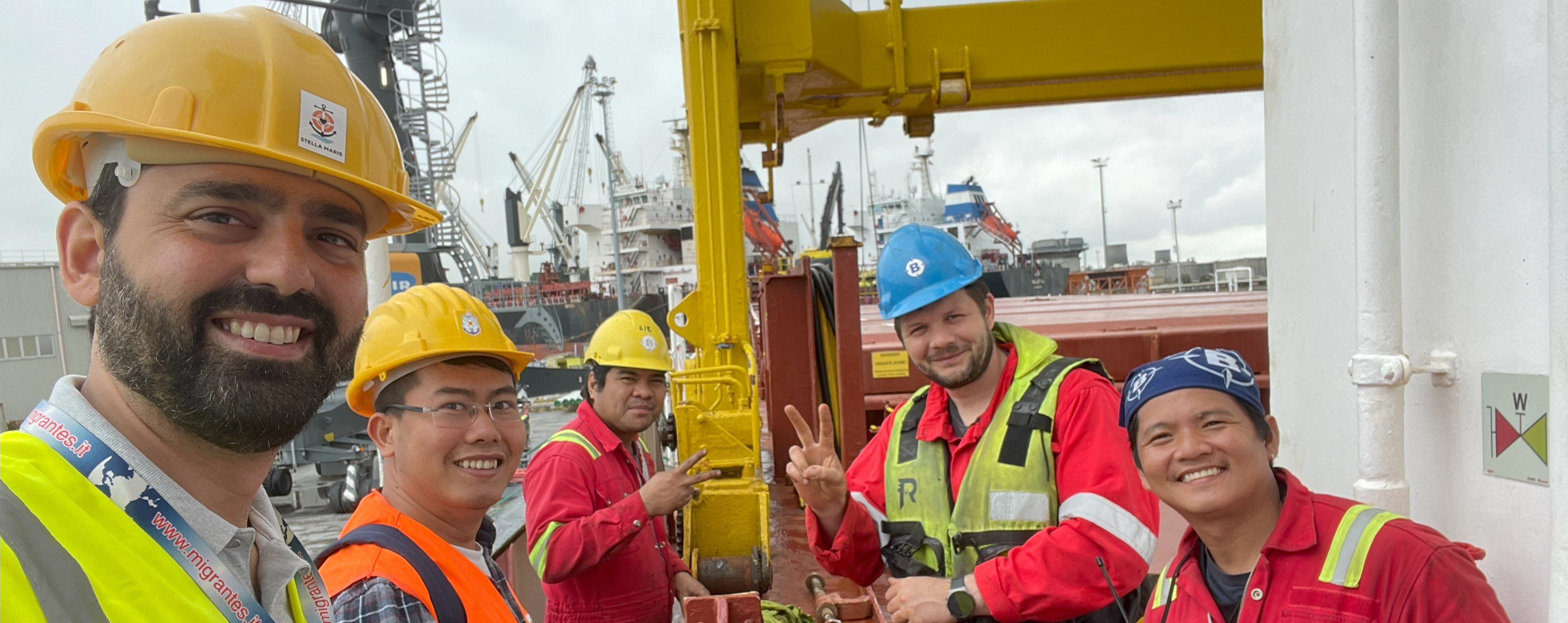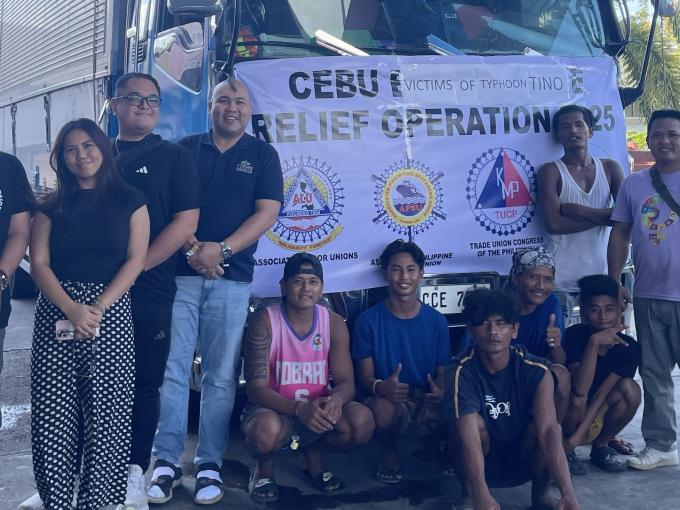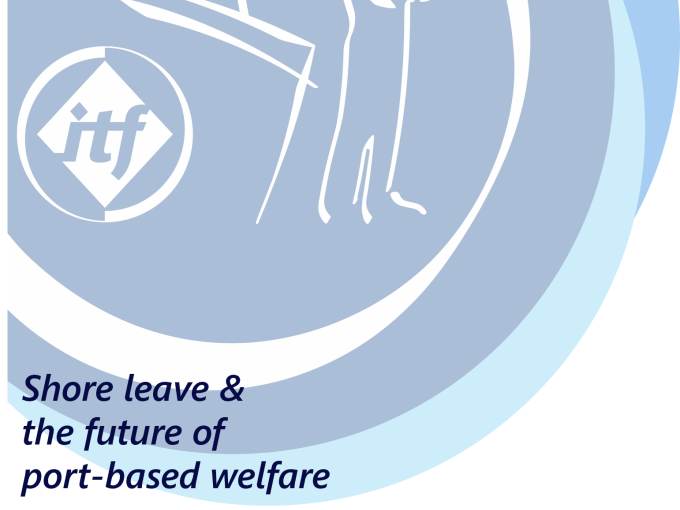
The Port of Ravenna is a remarkable example of how a functioning Port Welfare Committee should operate and what it can achieve to support seafarers. Our grants manager Luca Tommasi has recently been to visit the port and the people who make up the Port Welfare Committee (PWC) and see how they have managed to provide such a welcome to seafarers visiting Ravenna.
The port is developed along a canal that cuts through the north-eastern part of the city. Ravenna is 10km from the sea, and the canal goes all the way to the city centre, with several private terminals on both sides of the canal. Ravenna is an industrial port, with mainly general cargo and bulk carrier vessels calling. This is a positive opportunity for the seafarers crewing them, as most of the ships stay in port for a few days, giving seafarers sufficient time to go ashore. 
Ravenna Port Welfare Committee includes all the relevant port stakeholders but, unusually, it is led by a shipping agent, Captain Cordone, a former seafarer. This provides a consistency and stability in a position that is often occupied by people whose jobs can frequently move them to different ports.
In Ravenna, Captain Cordone has been the President of the PWC since its inception in 2009. Consequently, the PWC has been able to plan long term projects and interventions to support seafarers. Captain Cordone has also been able to gather a committed group of people, who have been involved in the regular PWC activities since its inception.
One of the many achievements of the Ravenna PWC has been to obtain a port levy paid by ships and collected by all port agents. The collected funds are used for various initiatives, including financing a full-time position with the local Stella Maris, which is the identified organisation to provide seafarers’ welfare services in the port of Ravenna.
Another unique achievement was obtaining permission for seafarers to freely use 2 local bus lines that stop just outside the port terminals, by just showing their shore pass to the bus drivers. There are 2 public bus routes that run along the either side of the canal and both reach Ravenna historical city centre, a mainly pedestrian UNESCO site full of ancient churches. The city is very safe and has many tourist attractions. Seafarers arriving in Ravenna are provided with the port map by various PWC stakeholders visiting ships in the port.
 As mentioned above, Stella Maris Ravenna is the local seafarers’ welfare provider. Based in a 3-story building in the centre of Ravenna, in walking distance of the city’s many churches, museums, restaurants and bars, their team is made up of a young Scalabrinian Port Chaplain, Don Vincenzo, a ship visitor/bus driver originally from the Philippines, and around 10 volunteers. Don Vincenzo is a very dedicated Chaplain, fairly new to the maritime world, but who has proved to be very passionate in serving seafarers and has already made a positive impact on seafarers arriving in Ravenna.
As mentioned above, Stella Maris Ravenna is the local seafarers’ welfare provider. Based in a 3-story building in the centre of Ravenna, in walking distance of the city’s many churches, museums, restaurants and bars, their team is made up of a young Scalabrinian Port Chaplain, Don Vincenzo, a ship visitor/bus driver originally from the Philippines, and around 10 volunteers. Don Vincenzo is a very dedicated Chaplain, fairly new to the maritime world, but who has proved to be very passionate in serving seafarers and has already made a positive impact on seafarers arriving in Ravenna.
Stella Maris Ravenna’s minibus, bought with a grant from the Trust and a contribution from the PWC, visits at least 5 ships a day and provides transportation from ships to the seafarers’ centre or the nearby shopping mall.
On the ground floor the seafarers’ centre has a lounge area, a billiard room, a kitchen and also an outdoor space, with chairs and tables. The 2 upper floors are used as office space for the 2 employees and accommodation for seafarers in need.
Unfortunately, these rooms have been used not that infrequently by abandoned or injured seafarers while they wait to recover, like a Filipino seafarer this year who broke both his elbows. He spent two months at the centre, taken care of by the volunteers, as he was unable to use both his arms. When it was time to go back to the Philippines, the PWC agreed to support him with a donation from its own funds.
According to the club logbook, there are seafarers visiting the club almost every day. Seafarers spend some time at the centre, mainly getting used to being ashore on solid ground before going out to explore the city, do some sightseeing, have a drink or use the bicycles available to borrow from the club. Don Vincenzo says after sampling the attractions of the city centre, they usually come back to hang out at the club, order a pizza, and play ping pong before getting their transport back to the ship.
Seafarers’ welfare in Ravenna is truly an example of how seafarers’ hospitality should be organized and carried out. The role of the PWC is essential, as they are able to collect funds, finance welfare positions, negotiate deals with local authorities to advantage seafarers and support seafarers in emergency situation. Stella Maris is supported in many ways by the PWC, as they are given access to all terminals, rely on financial support to carry out their activities and be able to have a direct channel to talk to all relevant stakeholders in the port.
The whole seafarers’ welfare system in Ravenna is a clear example showing how seafarers should be treated, and how a welcoming port can encourage them to go ashore and facilitate their unique situation of foreign workers in a foreign country, with services that are easy to access and meet their specific needs.




